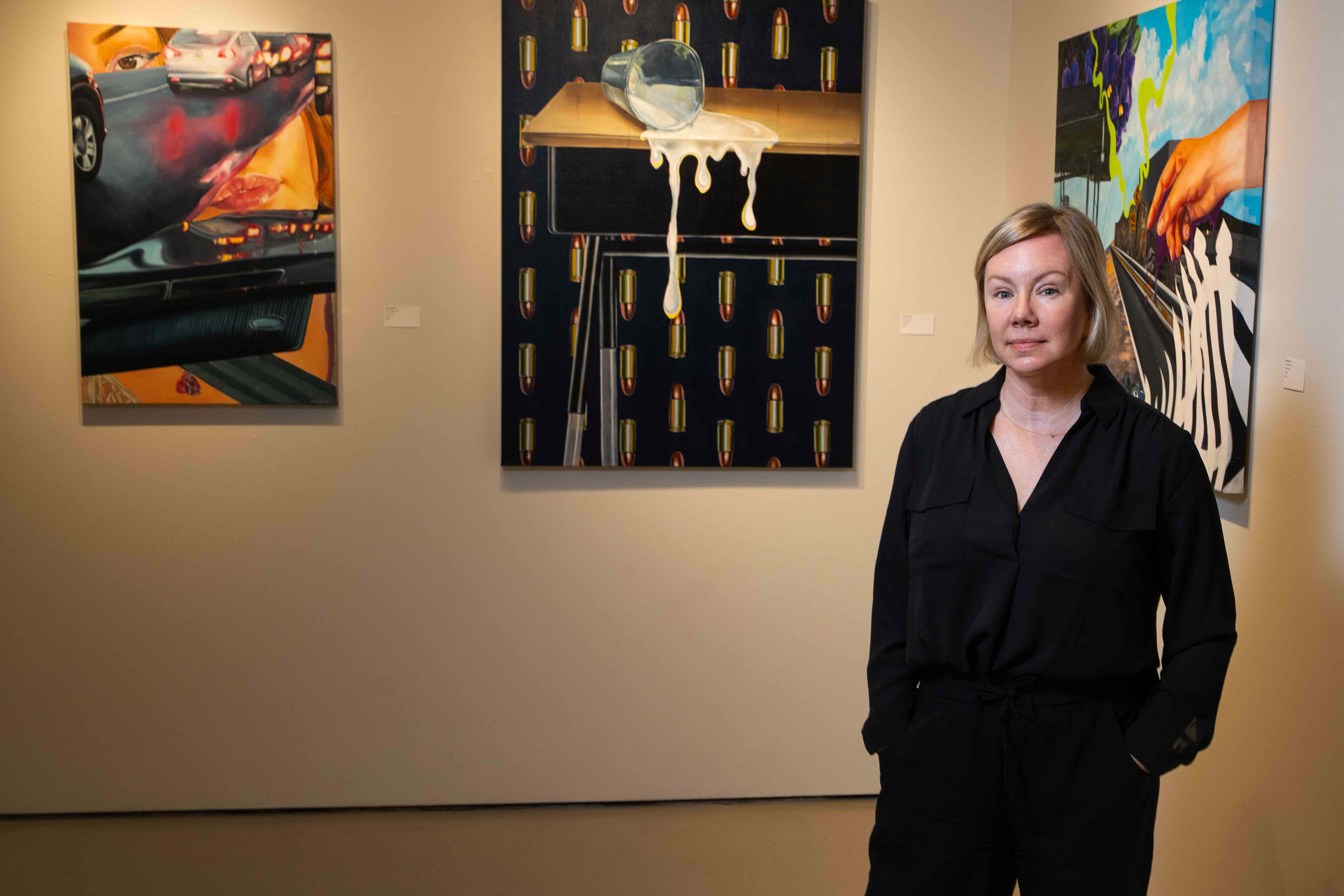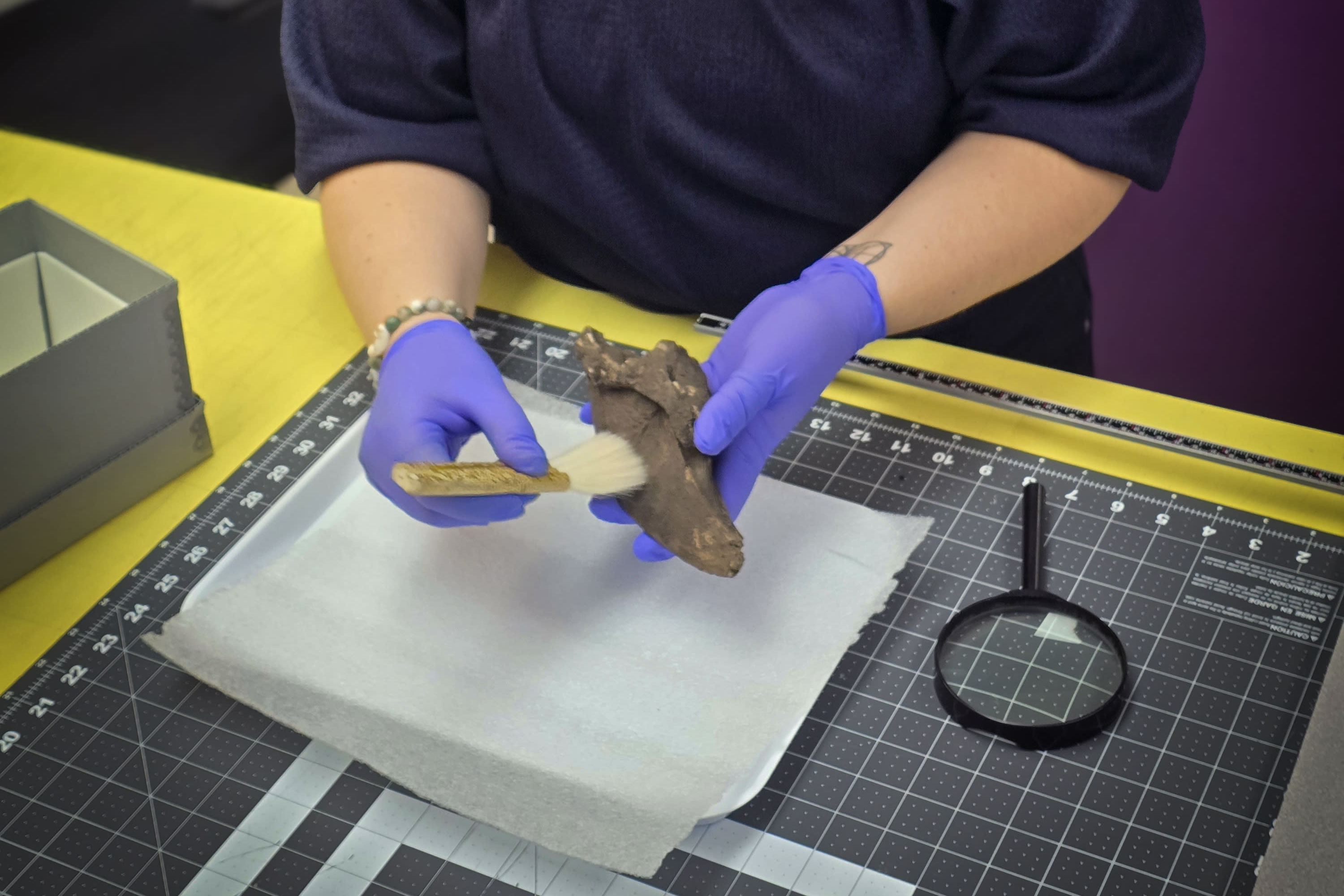"Creative Trespasser" Tania Katan is Next in Sarasota Museum of Art's "Artist Talks" Series

Tania Katan
Image: Courtesy SMOA
On Nov. 19, the Sarasota Museum of Art presents “Tania Katan, Creative Trespasser: Disrupting Museums, Bathrooms and Other Public/Private Spaces” as part of its Artist Talks series. Katan is a creative dynamo—an award-winning author and keynote speaker whose work has been lauded in The New York Times, NPR, Glamour and The Huffington Post among many others. Currently the product evangelist at Scottsdale, Arizona-based Axosoft software company, Katan is also working on a book about being a creative in the business world, titled Creative Trespassing.
We caught up with Katan fresh off the plane from Arizona and asked her about her career, her #ItWasNeveraDress campaign, and what audiences can expect from her talk.
How do you define yourself?
I’m a creative trespasser, an everyday disrupter and I’m funny. That’s really it.
What is your background in the arts and media?
My background is theater and creative writing, but one thing that I have [always] pursued is the idea of taking down hierarchy in all situations by using humor—and also by putting myself in jobs and situations where I don’t belong, or where I’m not invited, but where I feel like my body is necessary.
So, one of those situations included getting a job at a contemporary art museum. I didn’t have a degree in art history, but the director at the time was looking for a [creative] way to bring people in. I tried to make it fun and accessible; an invitation for people who [didn’t necessarily feel] comfortable in a contemporary art museum. I created programs there like “Arm Wrestle for Art,” where people literally arm wrestled and trash-talked in the museum to win art. I set out to democratize the way we apply our art, and that was very successful.
The “It was Never a Dress” campaign you created seems particularly apt during current times. What’s the story behind it?
I was invited to work with Axosoft, a software company, and it was the right time in my career to take a leap. I didn’t know anything about software at all, and had little to no interest [in it], but I knew that it was the right challenge and the right time.
So I started approaching [the work] like it was an artist’s residency, making connections between software, the methodology behind it, the culture and finding the artistry there. My boss at the time was going to sponsor a big “women in technology” event. I was three months in [to the job], and she said, “Let’s come up with ideas.” So I was thinking about women in technology and what that meant, and I started thinking about words and symbols that represent women. I went for a walk and started drawing and writing and coming up with ideas that might be good for addressing women in technology, and on the walk I thought about the symbol for the women’s bathroom. I thought, “There’s something with this bathroom symbol, I know there is,” so I brought the symbol back to my colleague and thought, “I think she’s wearing a cape.” I showed the symbol to my colleague and she said, “Oh my God, it was never a dress.” We pitched my boss the idea and she said, “Let’s go for it.” We turned it into stickers and gave them out at the conference, and I gave a talk about gender equality at the Girls in Tech conference. Somebody tweeted the image of the sticker and wrote “Cannot un-see.” And that launched this little campaign that could, that would, within 24 hours, receive over 20 million organic impressions. It was off the charts.
What will you be discussing in your talk at Ringling College?
I call this idea of sneaking into places I might not have belonged and adding something necessary “creative trespassing,” so what I’ll be doing is talking about all the ways I’ve snuck into museums and other places and ignited an idea and then worked collaboratively with people to make that bigger than the sum of its parts. So I’ll be talking about some of the creative trespassing I’ve done in museums, and specifically, how I tend to really like bathrooms. At one contemporary art museum, I curated the bathroom. I wasn’t really a curator—I didn’t have the title—and all the real curators had their fancy galleries and I said, “I’ll take the bathroom.” So I’ll be talking about taking performances, ideas, people and activating spaces that aren’t typically activated.
What advice would you give to young creatives and activists?
It’s great to talk within an educational institution. I love speaking at colleges and universities. In those systems, we’re often told, “OK, you major in this thing, and then you do this thing in the world.” What happens in the world is that we can’t always get a job in that thing. So what I would tell people who are artists, activists and everyday disrupters is that you can take those skills and transfer them into any space, and that you may in fact be able to cause a necessary ruckus if you go into spaces where you didn’t intend to use those skills.
Tickets are still available to Katan’s talk tomorrow at the Larry R. Thompson Academic Center Auditorium at 2363 Bradenton Road in Sarasota. Cost is free for SMOA donors and Ringling students; $10 otherwise. For more information, click here.



